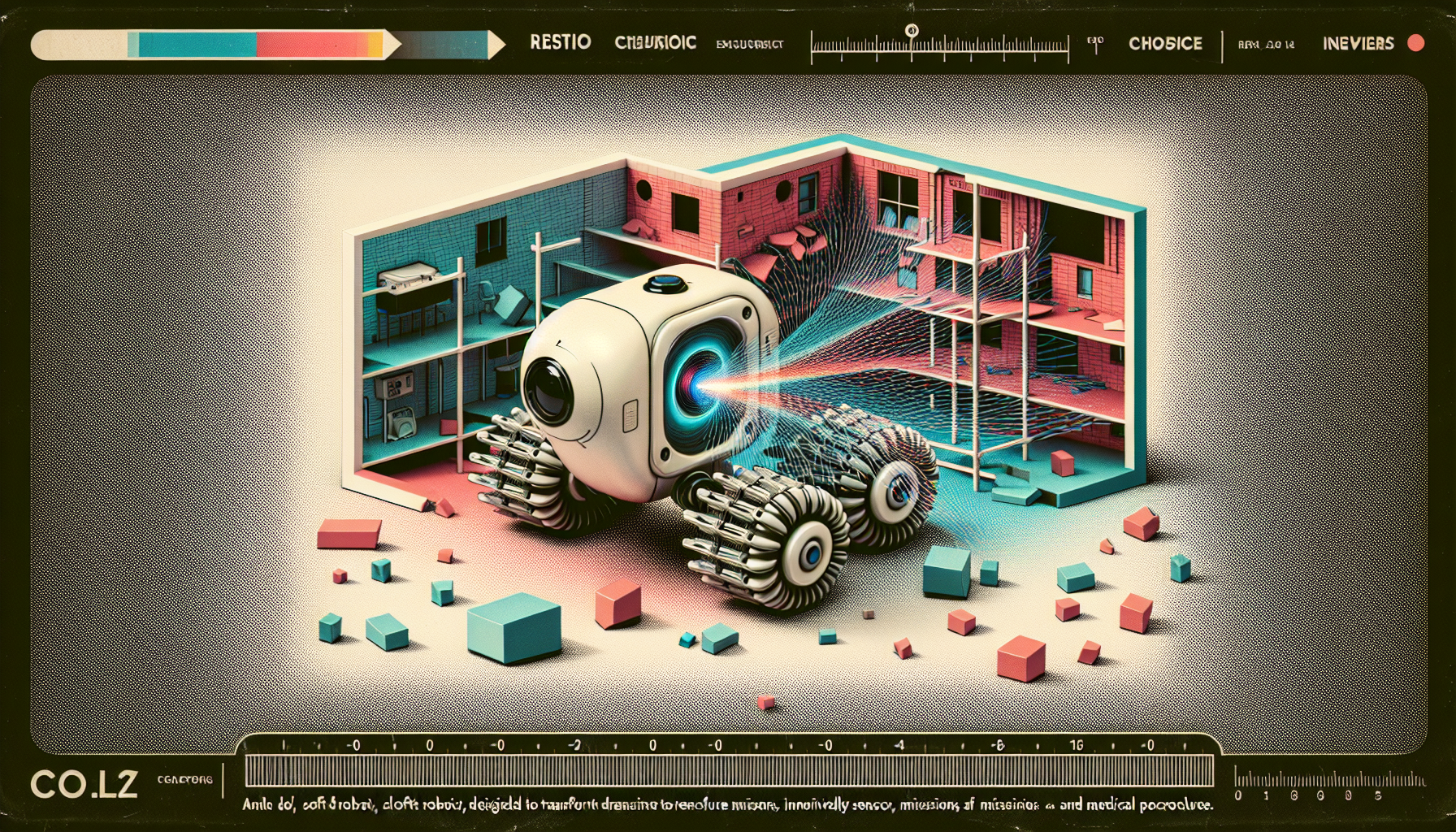In recent times, the realm of robotics has ushered in a remarkable innovation: tiny, soft robots designed to transform rescue missions and medical procedures. These cutting-edge robots possess a unique ability to traverse through collapsed structures and the human body, all thanks to their flexibility and advanced sensor technology. By harnessing magnetic fields, they can access tight spaces and respond to environmental cues, marking a new chapter in search-and-rescue operations and medical care.
Flexible and Autonomous Design
Soft robots, unlike their rigid counterparts, are crafted from materials similar to living organisms. This design grants them the flexibility to maneuver through narrow gaps, guided by magnetic fields that control their movements with minimal human input. Their autonomous nature is further enhanced by integrated sensors, enabling them to detect changes in their surroundings such as heat or pH levels. As a result, these robots are equipped to navigate complex terrains on their own.
Mastering Magnetic Actuation
The reliance on magnetic fields to drive these robots presents a technical challenge—avoiding interference with electronic signals. However, researchers have adeptly developed electronic configurations to mitigate such issues, ensuring that sensors remain functional even with strong magnetic influences.
Advanced Sensing and Navigation
Outfitted with sophisticated sensors, these robots can identify minute temperature shifts or pH changes, proving invaluable in locating individuals trapped during disasters or assessing conditions inside the body. Their ability to adapt to tightly confined spaces renders them ideal for both rescue missions and healthcare interventions.
Transforming Search-and-Rescue Efforts
Disaster Response: In the face of natural calamities, soft robots shine as they traverse through debris, pinpointing survivors with an agility unmatched by traditional machines. Their design allows them to penetrate challenging areas, significantly boosting the effectiveness of rescue operations.
Urban Environments: Innovations like the SPROUT robot from MIT Lincoln Laboratory use inflatable components to navigate and map collapsed buildings, delivering vital visual feedback to emergency teams.
Revolutionizing Medical Applications
Targeted Drug Delivery: In medical settings, these robots can journey through the human body to administer drugs directly where needed, reducing side effects and enhancing treatment outcomes.
“Robot Pills”: A vision for the future includes ingestible robots that travel the gastrointestinal tract, performing diagnostics, and delivering precise medical interventions without the need for invasive procedures.
Vascular Treatments: These tiny robots could be administered via injection into blood vessels to treat cardiovascular conditions, potentially offering a less invasive alternative to traditional surgeries.
Looking Ahead
As research advances, further miniaturization of these robots is anticipated, making them increasingly viable for medical applications. The ongoing development of smart sensors and flexible electronic systems will be crucial in augmenting their autonomy and effectiveness. Whether in disaster zones or within the human body, these robots stand poised to redefine methods in rescue and healthcare.
In Summary
The advent of tiny, soft robots marks a monumental leap in the world of robotics, bridging groundbreaking innovations with life-saving potential. Navigating both debris and the intricacies of the human anatomy, these robots set a new standard for how we address emergencies and medical challenges. As this technology progresses, its ability to save lives and improve medical care becomes ever more apparent, heralding a promising horizon in both fields.

Leave a Reply